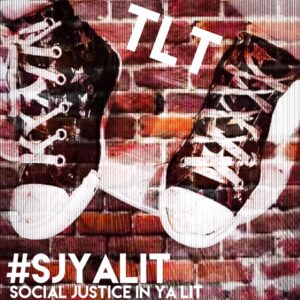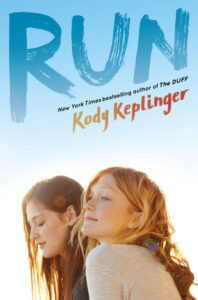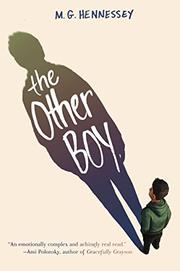“Not for Everyone”: The continuing marginalization of LGBTQ literature for kids, a guest post by M.G. Hennessey
 Today we are happy to share this post from author M.G. Hennessey as part of our Social Justice in YA Lit Project. Her book, The Other Boy, came out in 2016 and is about 12-year-old Shane, who is transgender. You can find out more about the #SJYALit Project here or by searching the hashtag here at TLT.
Today we are happy to share this post from author M.G. Hennessey as part of our Social Justice in YA Lit Project. Her book, The Other Boy, came out in 2016 and is about 12-year-old Shane, who is transgender. You can find out more about the #SJYALit Project here or by searching the hashtag here at TLT.
 “The story contains many references to Bo being bisexual and an abundance of bad language, so it is recommended for mature junior and senior high readers.”
“The story contains many references to Bo being bisexual and an abundance of bad language, so it is recommended for mature junior and senior high readers.”
This dire warning was part of a review for Kody Keplinger’s book Run. Bad language aside, the implication in the review is that the mere presence of a bisexual character is reason enough to steer clear. On Tumblr, author Tristina Wright summarized it nicely by saying, “When you tell children that mentions of bisexuality in a YA book require[s] a content warning, you tell them they are something Other. That their orientation is something to be ashamed of, to warn others about, that they’re not good. That they’re wrong and unacceptable.”
ADVERTISEMENT
ADVERTISEMENT
I read a wide range of young adult literature, and never once have I been warned off a book because of heterosexual characters behaving in a heterosexual manner. This disparity exists because of the mistaken perception that LGBTQ themed books are really about sex, not personal identity. There seems to be a double standard when it comes to LGBTQ themed literature. Consider this: Wonder was not specifically marketed toward kids with mandibulofacial dysostosis, and The Crossover wasn’t simply intended for African-American children. So why are stories about LGBTQ children often treated differently?
Books like Run aspire to achieve the sort of mainstream acceptance that Wonder and The Crossover have. Yet all too frequently, they end up on the LGBTQ shelf in libraries and bookstores. That’s not to say that they don’t belong there, but they should also be shelved with other new releases. And that’s still rarely the case. After all, you don’t see many “People of Color” or “Differently-Abled Character” themed tables in the same stores. And the sad truth is that many cisgender, heterosexual children do not gravitate toward the LGBTQ table, because they simply don’t think it applies to them. So essentially, these books are being held back from most of the population.
While in the past couple of years there has been a positive move toward publishing more diverse books for kids, on a wider range of themes, this type of ghettoization remains a problem. The “We Need Diverse Books” movement has nudged the industry in the right direction, but until reviewers and other gatekeepers catch up, it remains a partial victory.
 I experienced something similar with The Other Boy, the story of a transgender boy who gets outed after living stealth. Kirkus concluded their review with, “This is the story with a triumphant-but-realistic ending that trans kids haven’t had enough of.” Frankly, I cringed. It was exactly what I’d been afraid of; that a book about a transgender boy’s struggles would be regarded as only appropriate for kids exactly like him. While I’m delighted that transgender and gender expansive kids can see themselves reflected in my main character, that’s not the primary reason I wrote the book. My larger hope was that it would provide a window into the life of a transgender boy for all kids; after all, the bullying he suffers as a result is something most of them can relate to. And being transgender is not the only challenge he confronts over the course of the story; he also has to navigate divorced parents, his first crush, and issues with his best friend. These are all struggles that should speak to the vast majority of tweens.
I experienced something similar with The Other Boy, the story of a transgender boy who gets outed after living stealth. Kirkus concluded their review with, “This is the story with a triumphant-but-realistic ending that trans kids haven’t had enough of.” Frankly, I cringed. It was exactly what I’d been afraid of; that a book about a transgender boy’s struggles would be regarded as only appropriate for kids exactly like him. While I’m delighted that transgender and gender expansive kids can see themselves reflected in my main character, that’s not the primary reason I wrote the book. My larger hope was that it would provide a window into the life of a transgender boy for all kids; after all, the bullying he suffers as a result is something most of them can relate to. And being transgender is not the only challenge he confronts over the course of the story; he also has to navigate divorced parents, his first crush, and issues with his best friend. These are all struggles that should speak to the vast majority of tweens.
The assumption seems to be that the mainstream population isn’t interested in these types of stories; that despite the merits of a book, it doesn’t deserve a widespread audience sheerly because of its content.
I’d hoped we’d be past this by now, but the Run incident and my own personal experience have proven otherwise. I’d recommend that book reviewers take a moment to replace “bisexual” or “transgender” with “hetero” or “African American,” and see if it reads as offensive. If our goal is to open kids’ eyes to the wider world, to help them to understand and empathize with characters whose lives and experiences might differ from their own, then books that deal thoughtfully with those themes should be accorded the same level of respect and treatment as Wonder. “Try kindness” is not something that’s limited to one particular group; it’s something we should all aspire to. And until books with LGBTQ characters receive the same treatment as the Dork Diaries, we will not have achieved full equality.
Meet M.G. Hennessey
M.G. Hennessey is the author of The Other Boy, an upper middle grade debut about a 12 yo transgender boy who is living stealth after his transition. Described by Transparent creator Jill Soloway as, “A terrific read for all ages,” The Other Boy won a spot on the Rainbow List as one of the best LGBTQ-themed novels of 2017. M.G. is an ally and supporter of the Transgender Law Center, Gender Spectrum, and the Human Rights Campaign; she also volunteers at the Los Angeles LGBT Center. She lives in Los Angeles. (She/Her)
Filed under: #SJYALit
About Amanda MacGregor
Amanda MacGregor works in an elementary library, loves dogs, and can be found on Twitter @CiteSomething.
ADVERTISEMENT
ADVERTISEMENT
SLJ Blog Network
The Moral Dilemma of THE MONSTER AT THE END OF THIS BOOK
Cover Reveal and Q&A: The One and Only Googoosh with Azadeh Westergaard
Winnie-The-Pooh | Review
Parsing Religion in Public Schools
ADVERTISEMENT








I’m glad that you haven’t had the experience of being told that books like THE CROSSOVER are just for “urban schools” or “urban children” or “kids like that.” I definitely have, and I’ve definitely shopped in (white-owned and -run) bookstores where “African-American Interest” is treated like an equivalent genre to “[white] mystery” and “[white] romance.” While I agree that we have major improvements to make in the ways LGBTQIAP+ books are discussed, promoted, and marketed, it’s inaccurate to say that the same marginalization doesn’t happen to, particularly, books about children of colour.
It’s unfortunate, M. G. Hennessey, that that very Kirkus quotation you take issue with is blurbed on the back of your book. I’m guessing you didn’t have much of a say in what went on the cover. What responsibilities do you think publishers have, and do you think they are living up to them?
Seconding Kate B.’s comment and adding further that in my library system, we’ve run into the issue of non-Black parents who reject books with Black children on the cover for their own children to read. Library staff members try to hand-sell our favorite titles and to encourage mirror and window reading, but we run into this wall of anti-Black racism and a sense that “those” books are only for “those” kids and families. With queer books, I think there is a sense that if you offer a queer book to a young person, you are implying something. I wish that weren’t true, and I wish it weren’t considered derogatory, but there it is.
I think it’s super important that you are calling this out. I can testify that it makes a difference to educate people on this. I first read an argument along these lines last summer, and it definitely made me take another look at my classroom library. I teach middle school in a fairly conservative town, so somewhat against my better instincts, I have a “PG-13” shelf. After thinking about this, I pulled a couple of books off it and placed them back in the rest of the library. I hadn’t been dumb enough to put every LGBQT book over there–“Last Seen Leaving” and “George” were already in the main library–but there were a couple that were more directly romantic/racy, yet not enough so that I would have shelved them in the PG-13 section if it were a straight couple. It’s such a simple question to ask myself–where would this book go if all the characters were straight? Then that’s where it goes, no matter who the characters are.
I find that my middle school girls are quite open to reading about LBGQT characters, and some actively seek them out. Boys generally don’t–the exception being books about trans characters, which I think is maybe seen as rare enough that they’re not likely to get “accused” of being trans just because of their reading choices? Or maybe because we do have a few trans kids in our district and the other kids are curious about that experience?
Ugh, reviewers. Any reader who has ever had a secret can connect to Shane. And I find that cis kids love stories about trans characters specifically because it stretches their imaginations.